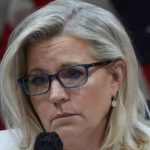The Raising their Voices report found 55 per cent of respondents experienced some form of workplace sexual harassment and sexual harm and 76 per cent suffered bullying in their careers. More than 1600 people contributed to the review, led by MAP Consulting’s Alexandra Shehadie, with many anonymously sharing the devastating mental health and career impacts of their experiences. Three per cent of women reported they had been raped or subjected to attempted sexual assault. “I used to wear men’s clothes just to cover up as I had been raped so many times,” wrote one woman.NED-7080-Role of perpetrator of sexual harassmentThe review was commissioned by industry bodies – 50 labels, publishers, promoters, managers and businesses funded the report – after multiple allegations made by artists and staffers of toxic workplace behaviours over the past two years. The majority of sexual harassment incidences happened at gigs, either venues (45 per cent) or festivals (14 per cent), followed by offices (21 per cent) and work-related events (17 per cent). Audience members were cited as the prevailing perpetrators (21 per cent), followed by colleagues (14 per cent) with senior managers (10 per cent). There were also incidences of sexual harassment by CEOs and business leaders (six per cent). The review team heard “alleged behaviour of many individuals in the music industry was ‘an open secret’ and complaints made to a whistleblower hotline were leaked. “At one event (a senior industry male) groped me and tried to kiss me. It was more like sexual assault. He had a history, but the (organisation) kept him working with other women,” one respondent reported. The recent safety policy issued by Sydney venue Club 77 which targeted unwanted attention including staring has proven prescient in the wake of the Raising their Voices review, with 95 per cent of people citing “inappropriate staring or leering” as harassment alongside unwelcome touching, hugging, cornering or kissing or other inappropriate physical contact.First Nations women said sexual harm and sexual harassment are often normalised including as a result of the expectations of having to “go out to dinner and network at after-hours gigs to promote your artistry or career.” Alongside Women of Colour, they encountered racism, systemic discrimination and barriers to career opportunities, with the report recommending a separate review be conducted about diversity and inclusivity in the music industry. The alcohol and drug culture which has been cast in the spotlight as a result of recent allegations of inappropriate behaviour at Australian labels, venues and other workplaces was called out in the review. “[When working at a particular organisation] there was often … a lot of … drinking events and stuff. Actually, when I left … I was almost at the point of liver failure. That was just the culture there,” one respondent said. NED-7081-Nature of Bullying behaviourShehadie’s review team called for the formation of a Contemporary Music Industry Cultural Reform Council to implement its 17 recommendations and address the industry failures in prevention, incidence reporting and investigation, care of victim survivors and compliance with workplace health and safety laws. The abuse of unpaid internships and sexual harassment of minors (at gigs or online) also needed to be stamped out.The Australian Festivals Association CEO Julia Robinson, who was part of the temporary working group which kicked off the review process last May, said the release of the Raising their Voices report would be confronting for industry leaders because of the heartwrenching experiences of artists and workers and the “really, really hard facts to take in.” “These stats do show that there has been harm caused in the music industry and working in the industry has come at some high personal cost for some of these people,” she said. “It was important to hear the stories from those 1600 people and we thank them for coming forward so that we could really understand what these problems are and how we can move forward to solve it with these organisations who’ve held a mirror up to themselves to see what is happening and how to how to make change.”AUSSIE ARTIST, INDUSTRY REACTArtist advocate Jaguar Jonze, who called out allegations of sexual assault in 2020 and has since tirelessly campaigned for industry reform, said it had taken “a lot of sacrifice and energy from survivors to establish awareness but it can’t stop there.”“There is much more work to be done to address specific issues, bring about a cultural shift and begin to reform,” she posted on Instagram.Within minutes of the report’s release on Thursday, more than 50 signatories, including major labels Sony, Universal and Warner and industry bodies ARIA and APRA, promoters and managers complied with one of the report recommendations by issuing a Joint Statement of Acknowledgement.“As leaders in the Australian contemporary music industry, we accept the distressing findings of the Review. We acknowledge the harm documented by the Review, and we are sorry,” the statement opened.“Everyone has the right to work in an environment free from bullying, sexual harassment, sexual assault and discrimination. As disturbing and confronting as the findings are, the Australian music industry is committed to change and to rebuilding trust. The music industry should – and will – foster safe, welcoming, respectful, creative, and fun environments.”IN THEIR OWN WORDSThe MAPN Review Team did hear positive reports of workplace experiences and changes to culture in the music industry “in recent times.” But the stories of many who contributed to the survey and interviews “point to an urgent need for change.”“I’ve been viciously raped many times by the same guy.”“I was sexually assaulted by [a man in the industry] on [a number of occasions] …So many people know … but he is … still supported by everyone in the music industry.”“[These male artists] have done gross sexual stuff to women. They are misogynists anddon’t respect women.”“Sexual abuse is a common experience [for First Nations women] and we tolerate it because of fear of retaliation within the industry.”“Young Black women artists need a lot of protection in the industry … If Black womenare the only ones in the room, they stand out. It’s just not safe … [Young women] need someelders they can take with them, and not be asked not to bring their entourage with them.”“There have been numerous examples where the artist line-up at large events do not includeany women, or First Nations women or when women are on stage, they are backing vocalists.”“There is no career path. 100 per cent there is a very low glass ceiling. There areheaps of women at mid-tier levels, then further up, its mainly men.”“I was an intern [for a couple of years] and [was] not paid. It was only after I left and moved into a real job that I realised how wrong that was.”“Black women in the music industry … [are] very few and far between. There are literallyno black women on the business side of things.”“All the boys [in the organisation] that were straight got invited to golf and drinks, whileI was excluded from everything.”“Thank god for lockdowns because it meant I didn’t wake up every morning stressed outabout having to face [my bully] every day.”“I made a complaint through the whistleblowing [scheme]. It was leaked.”RAISING THEIR VOICES KEY RECOMMENDATIONS1. A Contemporary Music Industry Cultural Reform Council to implement the recommendations to combat sexual harm, sexual harassment, bullying and systemic discrimination to be set up within six months, funded by industry organisations and governments. 2. The Council to devise a Code of Conduct to prevent harmful behaviour and require organisations to comply with workplace laws and adopt best practices to prevent and respond to sexual harm and harassment, bullying and discrimination. 3. Independent Safe Space where people can confidentially disclose breaches of the Code of Conduct and access specialist counselling and advice. The Council should also set up an independent arm for investigating complaints in addition to organisations’ internal processes. 4. A target of 40:40:20 (men, women and all genders) to achieve by 2030 for key leadership roles, industry conferences, events, panels and on bills and line-ups. 5. Review the under-representation and treatment of First Nations People of Colour, people with disability and LGBTIQ+ people across not only industry roles but award nominations, festival and event programming and line-ups. 6. Education and Awareness Campaign to increase awareness of the prevalence, nature and impacts of sexual harm, sexual harassment, bullying and systemic discrimination. This campaign should target organisations, artists, touring crews, technical personnel, venues and other relevant entities in the music industry. 7. Industry leaders, including artists, should deliver a Joint Statement of Acknowledgment addressing the harm already caused and a commitment to cultural reform and accountability. 8. Zero-harm approach to prevention by treating sexual harm, harassment, bullying and discrimination as a workplace health and safety issue. Artist contracts should allow them to amend or terminate a contract should they experience harm, including sexual harm, from a worker in the organisation. Click here to read the full Raising their Voices report.If you or someone you know needs helpSupport Act Helpline: 1800 959 5001800 RESPECT: 1800 737 732Lifeline Hotline: 13 11 14 or text their helpline on 0477 13 11 14SANE: 1800 187 263Suicide Call Back Service: 1300 659 467Beyond Blue 1300 224 636* National Music Writer Kathy McCabe participated in the Music Industry Review survey.kathtips
Powered by WPeMatico






